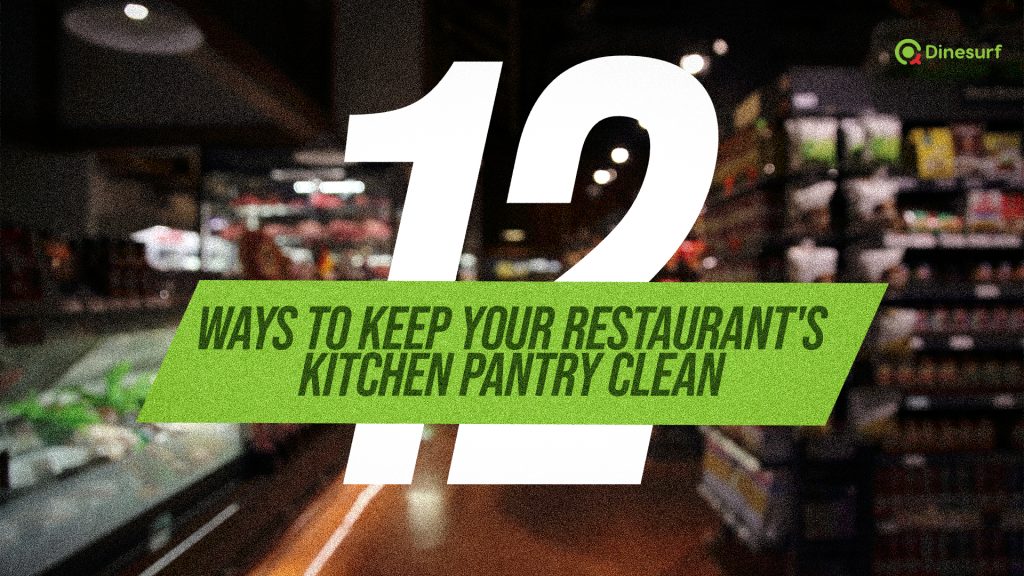
If you own or manage a restaurant, the importance of maintaining a clean kitchen pantry cannot be overemphasized. From ensuring adequate food safety to saving time and preventing costly losses due to spoilage, good housekeeping practices in your restaurant’s kitchen pantry are essential for success. Proper organization must start from day one – and it can make all the difference when it comes to running a smooth-operating business. Luckily, there are simple steps that restaurateurs can take step by step to keep their kitchen pantry organized, efficient and up-to-date on regulations. Today we’ll outline 12 best practices for keeping your restaurant’s kitchen pantry spic-and-span!
Best practices for keeping your restaurant’s kitchen pantry clean include:
1. Keep all food items separated and labeled so they can be easily identified. This will help prevent unwanted cross-contamination, which can lead to foodborne illness or other health risks.
2. Store like items together on shelves or in designated areas and use proper storage containers whenever possible. This not only helps you stay organized but also increases safety by reducing the risk of cross-contamination between different types of food items.
3. Perform frequent temperature checks with a thermometer to ensure that all cold foods are stored at safe temperatures (below 40°F). Any food item that is above this temperature should be discarded immediately to avoid potential health risks.
4. Maintain consistent rotation of older products to ensure that they are used before expiring. This will help reduce waste and maximize profits while keeping customers safe from spoiled or expired food items.
5. Have a system in place to track the date of purchase or expiration for each item stored in the kitchen pantry, so you can keep up-to-date on when products need to be replaced or disposed of.
6. Regularly inspect your pantry for signs of pest activity such as rodent droppings, webs, and insect nests. If any evidence is found, contact an exterminator immediately to take care of any infestations before things get worse.
7. Perform weekly cleanings by wiping down shelves and walls, sweeping floors and vacuuming any crevices that may have collected dirt or debris. This will help prevent the spread of germs and ensure a clean and healthy workspace for your team.
8. Keep all food preparation surfaces free from clutter and clean all utensils, cutting boards and other equipment after every use. This will help to minimize the risk of cross-contamination between raw foods and cooked items.
9. Always keep food stored at least six inches above the floor in order to prevent any moisture or dirt from entering into contact with the food items.
10. Ensure proper lighting throughout the kitchen pantry so you can easily identify any expired or spoiled products before they become a health hazard.
11. Always double check labels and expiration dates on packages before placing new items in the pantry, as this will help prevent any costly losses due to spoilage or waste resulting from incorrect storage times or temperatures.
12. Regularly audit your pantry to ensure that all items are up-to-date on regulations, such as food safety standards and any relevant industry guidelines. This will help protect you from any potential legal issues or customer complaints.
By following these simple tips (more tips here), you can help ensure that your restaurant’s kitchen pantry is always up-to-date on safety regulations, efficiently organized, and free from any potential health risks. A clean kitchen pantry will not only help save time but also keep customers safe from foodborne illnesses or other unwanted surprises. Remember, good housekeeping practices start with a well-maintained kitchen pantry – so if you want your business to succeed, take the time to keep things in tip top shape!
YOU MAY LIKE THIS
- 10 Popular topics restaurant guests love to discuss

- 10 steps to easily manage your restaurant’s email marketing

- 10 Tips for managing Gen Z diners at your restaurant

- 10 Valentine’s day marketing ideas for restaurants

- 10 Vital Kitchen Tools to Empower Your Restaurant’s Effectiveness

- 10 ways to prevent burnout of your restaurant staff










